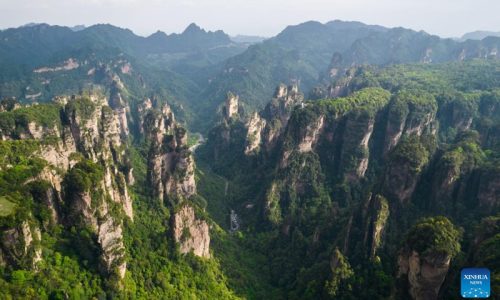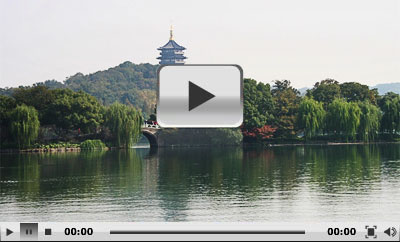Discover the Borneo Orangutan Sanctuaries in Borneo Malaysia and Indonesia: Conservation, Rehabilitation, and Support Opportunities
The Borneo Orangutan Sanctuaries in Borneo Malaysia and Indonesia serve as vital centers dedicated to the protection, rescue, and rehabilitation of one of the world’s most endangered primate species. These sanctuaries play a crucial role in safeguarding the unique biodiversity of Borneo, offering a safe haven for orangutans displaced by habitat destruction, illegal poaching, and human-wildlife conflicts. Visitors and supporters can learn about ongoing conservation efforts, participate in volunteer programs, and contribute to the preservation of this remarkable species. Through dedicated research, community engagement, and sustainable practices, these sanctuaries aim to ensure the survival of orangutans and restore their natural habitats, making them essential pillars in regional ecological stability and global biodiversity initiatives. Supporting these centers not only helps rescue and rehabilitate individual animals but also promotes awareness and action toward long-term environmental conservation in Borneo’s lush rainforests.

Comprehensive Introduction to Borneo Orangutan Sanctuaries: Protecting and Saving the Rare Orangutan Species
The Borneo Orangutan Sanctuaries in Malaysia and Indonesia are vital conservation centers dedicated to safeguarding one of the world’s most endangered primates. These sanctuaries focus on rescuing, rehabilitating, and releasing orangutans that have been displaced due to habitat destruction, illegal pet trade, or human-wildlife conflict. Their mission is crucial in maintaining biodiversity and preventing the extinction of this intelligent species.
Through extensive rescue operations, habitat restoration, and public awareness campaigns, the sanctuaries play a pivotal role in ensuring the survival of orangutans in Borneo. Visitors and supporters gain insight into the challenges faced by these primates and how dedicated efforts are making a difference in their future.
Educational programs within these centers aim to inform local communities and tourists about the importance of orangutan conservation. By fostering a sense of responsibility and providing opportunities for direct involvement, these sanctuaries are essential in creating a sustainable environment for orangutans in Borneo.
The History and Establishment of Borneo Orangutan Sanctuaries: Their Role in Conservation
The Borneo Orangutan Sanctuaries were established decades ago in response to alarming declines in orangutan populations caused by deforestation and illegal poaching. Initially focused on rescuing injured or orphaned orangutans, these centers expanded their scope to include rehabilitation and reintroduction into protected natural habitats.
Supported by international collaborations and environmental organizations, the sanctuaries utilize advanced technology and expert teams to develop effective conservation strategies. Their long-term goal is to restore self-sustaining populations of orangutans in their native forests, ensuring their survival for future generations.
Over the years, these efforts have led to significant increases in orangutan numbers within protected zones, demonstrating the effectiveness of targeted conservation programs and community engagement in preserving this species in Borneo.
How You Can Support Borneo Orangutan Sanctuaries: Campaigns, Donations, and Volunteer Opportunities
Supporting the Borneo Orangutan Sanctuaries can be achieved through various means, including financial donations, participating in awareness campaigns, and volunteering. Donations help fund rescue operations, habitat restoration, and medical care for injured orangutans, ensuring the continuity of their vital work.
Engaging in volunteer programs allows individuals to contribute directly to conservation efforts, whether through educational outreach, habitat planting, or animal care. These activities not only assist the sanctuaries but also raise awareness among local communities and visitors.
Additionally, spreading awareness via social media, organizing fundraising events, or partnering with organizations dedicated to wildlife protection can significantly amplify the impact of conservation initiatives. Every contribution, big or small, plays a role in securing a future for orangutans in Borneo.
Daily Life at Borneo Orangutan Sanctuaries: Animal Care, Training, and Rehabilitation
The sanctuaries employ dedicated teams of veterinarians, caregivers, and conservationists who work daily to ensure the health and well-being of rescued orangutans. Their routine includes feeding, medical treatment, and behavioral training to prepare the animals for eventual release into the wild.
Rehabilitation programs focus on teaching orangutans survival skills such as foraging, nest-building, and navigating the forest canopy. This process is meticulous and requires patience, as each orangutan’s needs and progress are carefully monitored.
Public educational tours and volunteer activities also form an integral part of daily operations, helping visitors understand the importance of conservation and inspiring community involvement in protecting orangutans and their habitats.
Reintroduction and Release Projects: Returning Orangutans to Their Natural Habitat
A core objective of the sanctuaries is to rehabilitate and reintroduce orangutans into protected forests. After thorough training and health assessments, suitable orangutans are released into designated conservation areas where they can thrive independently.
This process involves gradual acclimatization, ensuring the animals adapt to natural conditions and develop essential survival skills. Post-release monitoring is crucial to track their adaptation and prevent threats such as poaching or habitat encroachment.
These reintroduction efforts are supported by collaborations with local authorities and environmental agencies, aiming to rebuild wild populations and restore ecological balance in Borneo’s forests.
The Impact of Human Activities and Environmental Threats on Orangutan Habitats in Borneo
Deforestation driven by logging, palm oil plantations, and mining has drastically reduced orangutan habitats, pushing the species toward extinction. Habitat fragmentation makes it difficult for orangutans to find food and mates, leading to declining populations.
Illegal hunting and the pet trade further threaten orangutans, often resulting in injury or death. These human activities disrupt the natural ecosystem and undermine conservation efforts.
Addressing these challenges requires comprehensive strategies, including stricter enforcement of wildlife laws, sustainable land-use practices, and community engagement to promote conservation-friendly livelihoods and protect remaining forests.
The Role of Education and Cultural Awareness in Orangutan Conservation in Borneo
Educating local communities and visitors about the importance of orangutan conservation is vital for long-term success. Cultural programs, school initiatives, and media campaigns raise awareness of the species’ plight and foster a conservation-minded attitude.
Empowering local populations with knowledge and sustainable alternatives reduces reliance on forest resources and curtails illegal activities. Community involvement ensures that conservation becomes a shared responsibility rather than a distant goal.
Partnerships with schools, NGOs, and government agencies help embed conservation principles into local culture, ensuring future generations value and protect orangutans and their habitats in Borneo.
Future Challenges and Opportunities in Orangutan Conservation in Borneo
Looking ahead, climate change, expanding agriculture, and infrastructure development pose ongoing threats to orangutan habitats. Innovative solutions, such as satellite monitoring and habitat corridors, are essential to adapt conservation strategies.
Opportunities also exist in eco-tourism, which can generate sustainable income for local communities while promoting awareness and protection of orangutans. Strengthening legal frameworks and international cooperation will be key to addressing illegal activities and habitat loss.
Investing in research, technology, and community-based conservation programs offers hope for a resilient future where orangutans can thrive in their natural environment for generations to come.
Exciting Experiences and Special Events at Borneo Orangutan Sanctuaries
Visitors to the sanctuaries can enjoy unique experiences such as observing orangutans during their rehabilitation process, participating in guided tours, and learning firsthand about conservation efforts. Special events like orangutan release days and educational workshops create memorable opportunities to connect with nature.
These events not only educate the public but also inspire greater involvement and support for orangutan protection. Witnessing the successful reintroduction of orangutans into the wild is a powerful reminder of what dedicated conservation can achieve.
Engaging in these activities fosters a deeper appreciation for wildlife and encourages visitors to become advocates for orangutan conservation, ensuring continued efforts to save this iconic species in Borneo.

Frequently Asked Questions about Borneo Orangutan Sanctuaries
- What are Borneo Orangutan Sanctuaries?
- The Borneo Orangutan Sanctuaries are dedicated conservation centers located in Malaysia and Indonesia that focus on rescuing, rehabilitating, and releasing orangutans. These sanctuaries aim to protect one of the world’s most endangered primates from threats like habitat destruction, illegal pet trade, and human-wildlife conflict.
- How do the sanctuaries help orangutans?
- They rescue injured or displaced orangutans, provide medical care, and rehabilitate them by teaching survival skills such as foraging and nest-building. After recovery, suitable orangutans are reintroduced into protected forests to ensure their survival in the wild.
- What is the history behind these sanctuaries?
- Established decades ago in response to declining orangutan populations, these centers initially focused on rescue efforts. Over time, they expanded their scope to include rehabilitation and reintroduction, supported by international collaborations and advanced technology to restore wild populations.
- How can I support the conservation efforts?
- You can support through donations, volunteering, and spreading awareness. Donations fund rescue and habitat restoration, while volunteering helps directly with animal care and educational programs. Raising awareness via social media or organizing events also plays a vital role.
- What does a typical day look like at the sanctuaries?
- Daily activities include feeding, medical treatment, behavioral training, and habitat enrichment. Dedicated teams of veterinarians and caregivers work to ensure the health and well-being of the orangutans, preparing them for eventual release into the wild.
- How are orangutans reintroduced into their natural habitat?
- Reintroduction involves gradual acclimatization, health assessments, and training in survival skills. Post-release monitoring ensures their adaptation and safety, with efforts supported by collaborations with local authorities and conservation groups.
- What threats do orangutans face in Borneo?
- Major threats include deforestation caused by logging, palm oil plantations, and mining, which fragment their habitat. Illegal hunting and the pet trade also pose significant risks, often leading to injury or death.
- Why is education important for orangutan conservation?
- Educating local communities and visitors raises awareness about the species’ plight, promotes conservation-minded attitudes, and encourages sustainable practices. It helps reduce illegal activities and fosters a sense of shared responsibility.
- What future challenges do orangutan conservation efforts face?
- Challenges include climate change, habitat loss from development, and illegal activities. Opportunities lie in eco-tourism, technological advancements like satellite monitoring, and stronger legal protections to ensure long-term survival.
- Are there special events at the sanctuaries?
- Yes, visitors can participate in orangutan release days, guided tours, and educational workshops. These events aim to inspire support and provide memorable experiences that highlight the importance of conservation efforts.
- Can I visit the sanctuaries?
- Many sanctuaries welcome visitors for educational tours and volunteer programs. Visiting helps raise awareness and supports ongoing conservation projects, contributing directly to the protection of orangutans.
- How does eco-tourism benefit orangutan conservation?
- Eco-tourism generates sustainable income for local communities, funds conservation activities, and raises global awareness. It encourages responsible travel that minimizes environmental impact while supporting orangutan protection.
- What role do local communities play in conservation?
- Local communities are vital; they participate in habitat preservation, patrol illegal activities, and adopt sustainable livelihoods. Education and involvement foster a conservation culture that benefits orangutans and humans alike.
- How is technology used in orangutan conservation?
- Technologies like satellite imaging, GPS tracking, and camera traps help monitor habitats and animal movements. These tools enable more effective management and protection strategies for orangutan populations.
- What can individuals do to help save orangutans?
- Individuals can donate, volunteer, spread awareness, and support organizations working for orangutan conservation. Responsible consumption, such as avoiding products linked to deforestation, also makes a difference.


























